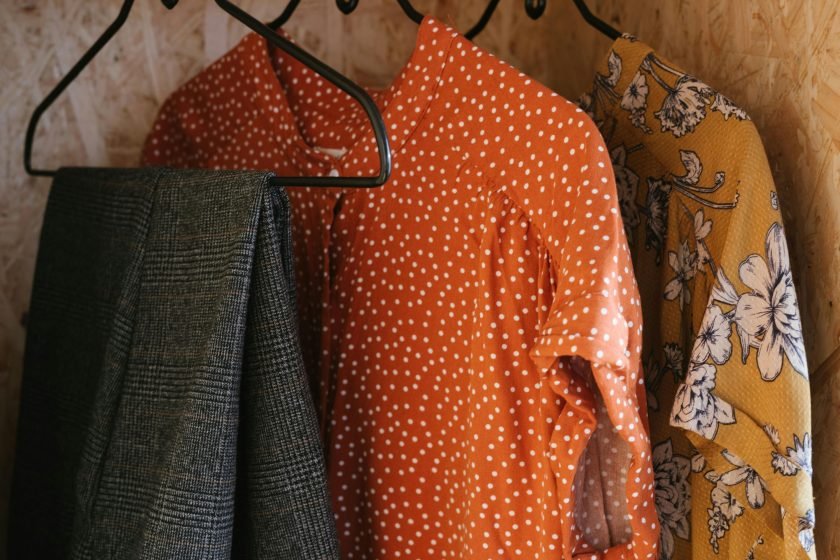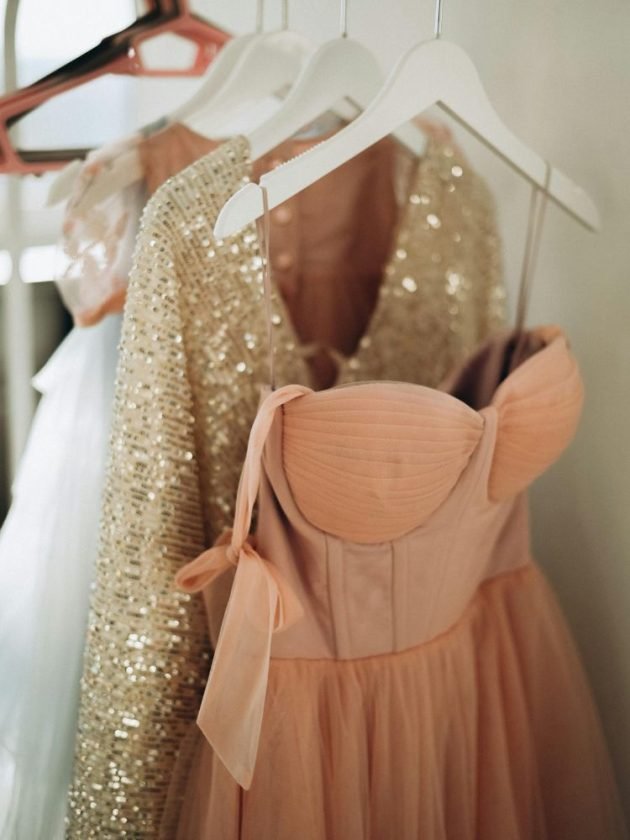Have you ever counted the number of pieces in your wardrobe or kept the track of the items going in and out of your closet?
I found the experience eye-opening. Understanding the data of our closets can set the foundation for being more mindful with our closets and our shopping patterns.
I was originally inspired to formally count the number of pieces in my closet during the Or Foundation’s “I can count, can you?” challenge. With this initiative, individuals are encouraged to share the number of items in their closets and then ask 3 brands: how many pieces do you produce each year?
Overproduction and overconsumption are among the biggest issues facing fashion sustainability — from emissions to waste colonialism — and yet we don’t even have an exact number of how many garments are produced each year. Production volumes is a data point that every brand already knows, but very few disclose it!
So I joined in on the challenge for fashion advocacy, but also left with a sense of clarity with my own closet. And now I’m a bit proponent of this exercise for anyone wanting to take a more slow fashion approach. As they say, numbers don’t lie. (If they’re accurate, of course.)
How to Track Your Clothes
Here was my simple process. This took me about 30 minutes in total, so grab yourself a cup of tea, put on some fun music and let’s get started!
Step one: get a clear view of all your clothes
For example, if you have some seasonal clothes in a storage bin, take the bin out for this exercise. Also don’t forget about any clothes in your hamper. You don’t need to take every garment out, but just have them handy to count.
Step two: have somewhere to track your clothes
You can simply use your phone’s notes app, or you can use my free closet tracker template with the categories and sub-categories already sorted out for you.
Step three: count your clothes, category by category
You can be as granular or as general as you’d like for this exercise. So maybe you want to just count “sweaters” or perhaps you want to count “lightweight sweaters”, “heavyweight sweaters”, and “sweater vests” in separate categories.
I like to layer my sweaters, so I found it helpful to sort it out into subcategories. Ideally I want more lightweight sweaters to layer underneath my heavyweight sweaters, since I’d have to wash the under layer more often.
Step four: total it up!
My closet tracker automatically adds up the total of garments from each individual category, but you also of course just do a simple adding exercise if you used your notes app.

How Many Clothes “Should” We Have?
After doing this exercise, I found that I have 190 garments in total if I count my activewear and coats (but not including my pajamas or underwear).
Maybe you have more than that or or maybe you have fewer than that.
Either way, you might be wondering: what is a high number or low number? How many garments “should” we expect to have in our closets?
What is the average number?
It’s difficult to find true answers to this type of question, because most averages are calculated based on self-reported surveys. And we don’t know for sure if respondents are actually counting or just guesstimating. Unscientific survey numbers range from 103 to 148 garments.
For the sake of this exercise, we’ll move forward with that and say that the number of garments I have is slightly above average. I certainly am not buying a ton of new garments per year, but I do hold onto my clothes a long time. In 2024, I only welcomed in 6 new pieces. (Though transparently, I also added about 15 secondhand pieces in total from friends & family and a clothing swap.)
What is a “sufficient” number?
Hot or Cool Institute released a report, asserting that based on their data, a “sufficient” wardrobe consists of:
- 74 garments in a 2-season country (about 20 outfits)
- 85 garments in a 4-season country.
It was a bit confronting to see that the number of clothes in my closet is deemed double the “sufficient” amount.
That said, I do think that number is somewhat personal to our lifestyles and environments — I wear 4 layers on top at once if I’m going outside in the middle of winter here, for example! — and I certainly don’t think we should be dumping or donating our clothes just because we have more than what is deemed “sufficient”.
After all, what happens to our donated clothes is not always pretty.
That said, the decision fatigue is real when getting dressed in the morning amidst a closet of too many clothes.
Here are some questions to ask if you’re debating whether the number of items in your closet is right for you:
- How many items in your closet have you not worn at all in the last year?
- When you’re getting dressed each day, do you feel overwhelmed by your closet?
- Do all your clothes fit in your closet and/or dresser or are you tight on space?
Your answers to this question don’t necessarily mean you need to go on a decluttering spree, but they could be a sign that a pause would be helpful to reassess. (Here are my tips for doing a “low-buy” fashion challenge.)
The Benefits of Closet Tracking
There are a lot of reasons to track the clothes (and footwear & accessories) in your closet — here are a few of the benefits I experienced from closet tracking.
A renewed sense of appreciation of your closet
It’s so easy to think that we don’t have “enough” when we’re surrounded by overconsumption culture, but this exercise can be quite humbling!
The practice of actually sifting through every drawer and hanger showed me just how much I actually have. It also reminded me of garments I had once loved that had fallen to the wayside!
Some of these garments I still love and now have challenged myself to wear this next month. And others, I’m excited to resell to give someone else the opportunity to love them as much as I did.
Learn which categories you overbuy (or maybe underbuy)
Once you have a count of how many items you own in each category, you can quickly see if your closet is balanced.
This is going to be quite personal and I stay away from anyone who tells me that I should have this number of trousers and this number of button-up shirts, and so on. Everyone’s lifestyle and personal style is different!
Do you need a lot of trousers or skirts for work? Or do you work from home and wear loungewear most of the time? When you go out, do you like dressing up or do you generally like to stick to jeans and a tee? These will inform how many items you want in each category.
I’ve found that I love to wear thin secondhand wool turtlenecks in winter — they help me embody one of my style words “warm” quite literally while still looking feminine (another one of my style words).
It can inform your “do not buy” vs. “want to buy” lists
We can tend to make assumptions about our wardrobes from time to time, but having data is the best way to get an accurate picture.
When I did my closet tracking exercise, it was clear that I had more than enough formal dresses, considering the rarity of occasions I actually have to wear said dresses.
These are definitely going on my “do not buy” list and I’ll stick to borrowing from friends or renting when the occasion does arise!

However, I found that I don’t have enough jeans that I actually enjoy wearing. I own just a couple of pairs that actually suit me. It’s time to resell my skinny jeans — not because they’re in or out of style (I can never keep track anyway) but simply because I dislike wearing them! And instead I’m putting “straight-leg denim” on my “want to buy” list.
It reminds you of every single piece you have
Before going through the process of closet tracking, I felt bored with my closet. After going through each item one by one, though, I was reminded of so many past gems that I had been overlooking.
I put these items to the front (you also can hang these items on a separate rack if you have one) and challenged myself to style them in the next week.
All in all, closet tracking was admittedly a bit of an upfront effort, but it will be a great resource to turn to again and again. It will help me get an accurate assessment of my closet and plan future purchases with more thought and care.
Want to try it yourself? Use my closet tracker template:
window.fd(‘form’, {
formId: ‘6797a148e2188aa5ed183563’,
containerEl: ‘#fd-form-6797a148e2188aa5ed183563’
});
The post Why Closet Tracking Can Be Such a Powerful Tool to Build a Mindful Wardrobe appeared first on .














